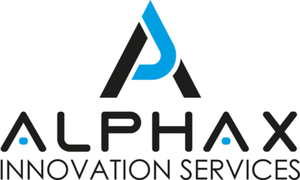Advantages of Automation
Automation, as it comes from its name, is the method of reducing the necessity of human interfering. It can fulfill routine and repeatable tasks that won’t require deep analysis and problem-solving skills. Another case of usage is the area where human errors can take place due to the tedious nature of the task. In this case automation would eliminate this possibility.
Thanks to automation, human performers will be able to focus on more important assignments. The task performance will become safer and more accurate. Besides, the new employees will get on top of the job faster if you use automated systems.
The software solutions for automation appeal to the following areas:
- Internet of Things. It states for the possibility to remove the “human interface” and let the “machines” communicate directly. E.g.: several devices in one “network” controlled via the mobile device – health trackers, smart home gadgets, etc.
- Business and finance spheres. Automation software solutions can start and process billing tasks, i.e. charge accounts and perform payouts. This way users can conclude all deals.
- Document flow. Participants can request, receive, register and process documents without manual actions.
- Archives management. This area deals mostly with historical records (keeping the data, registries, search operations, etc.). But it can be applied to any document databases.
- Remote monitoring and other control systems.
- This is one of the favorite scopes of automation apps. With their help it is possible to get and manage leads, schedule and track the tasks, set email marketing or social media marketing campaigns, etc.
- Regular troubleshooting, maintenance and updating systems.
Automation methods and solutions become more and more popular and important with each day. It is the reflection of the general trend to reduce costs and increase productivity.
Lean Management in the Software Development Cycle
This method is applicable at every stage of the product development process. The goal is to optimize the work and provide more efficient tools to create applications:
- The team working on the project will include the best experts. Their cooperation won’t be spoiled by any miscommunication, as they exchange the information directly.
- We prepare thoroughly and develop all necessary kinds of the software requirements. This assures that the developers understand how the product must perform under any conditions.
- It allows rejecting the unnecessary features of the product that would slow the work down.
- After every meaningful step we review the results and analyze our efforts. Hence, we detect any pitfalls and remove them.
- Lean management helps to drop bureaucracy. We communicate with you directly and constantly and take all remarks into consideration.
- We develop the criteria for code at the beginning. When the programmers start to write it, they know the goals and requirements for the performance. So, they can avoid defects and additional rework.
- The process of the software development is becoming faster. We can collect feedback immediately when the product is available.
Examples of automation software developed by our team
Heymate – a web platform with the dedicated mobile app. It is based on the blockchain “smart contracts”. The service is meant for micro-entrepreneurs to help them make deals online. With heymate they can create and accept offers automatically. This works for all types of payments, insurances, distribution cases, loans, etc.
Netfira – a B2B solution for document flow management. It lets companies exchange any types of documents automatically. They can send and receive invoices, receipts, orders and order confirmations, etc. The option is a part of the “onboarding of the client’s” procedure performed by the suppliers.
We’ll be glad to design and put in place any custom solution that will help you manage your business better.

